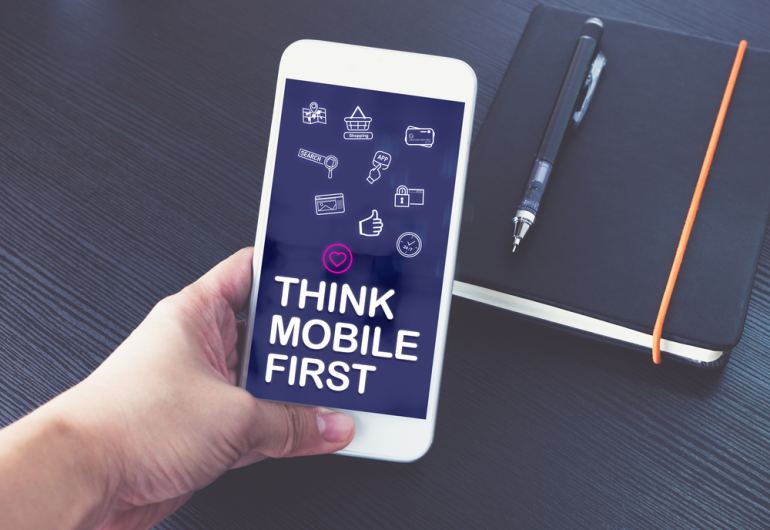
The impact of mobile-first marketing in a multi-device world
In today's multi-device world, mobile phones have become the primary device for consuming content and making purchases. This has led to a shift in the way businesses approach marketing, with mobile-first marketing becoming the dominant strategy for reaching consumers effectively.
Mobile-first marketing is an approach that prioritizes the mobile experience, with a focus on creating marketing campaigns that cater to the needs of mobile users. As a result, the implementation of mobile-first marketing strategies allows for efficient targeting of the audience, regardless of the constantly shifting usage of various screens and devices.
As consumers continue to rely on their mobile devices for information and entertainment, it has never been more important for businesses to embrace mobile-first marketing as a key component of their marketing strategy. Whether you're a seasoned marketer or just starting out, this guide will provide valuable insights and information to help you succeed.
The Growth of Mobile Usage and its Impact on Marketing
Mobile-first marketing is a strategy that prioritizes the mobile experience and puts mobile devices at the center of all marketing activities. The idea is to create marketing campaigns that cater to the needs of mobile users, providing them with a seamless, user-friendly experience across all screens, devices, and operating systems. The end goal of mobile-first marketing is to reach consumers where they are spending the most time - on their mobile devices.
The Benefits of Mobile-Friendly Content and Experience
The importance of mobile-first marketing has increased in the past few years, where consumers use multiple devices to access the same content or complete a purchase. According to a recent study by Google, 70% of consumers use multiple devices to complete a purchase, and 53% switch between devices before making a purchase.
This behavior highlights the need for a cross-device marketing strategy that can provide a seamless experience for consumers as they switch between devices.
Creating an Effective Mobile-First Marketing Strategy
Mobile-first marketing offers several benefits for businesses looking to reach their target audience effectively.
- It helps businesses reach consumers where they are spending the most time. A study by eMarketer shows that in 2021, an average person spent 3 hours and 25 minutes on their mobile devices daily, making it easier to capture their attention and drive engagement.
- It enables businesses to create a consistent brand experience across all devices, improving brand recognition and loyalty. According to a study by Adobe, 64% of consumers are more likely to buy from a company with a mobile-friendly website. This brand consistency also applies to branding outside of mobile devices.
- Mobile-first marketing helps businesses optimize their marketing efforts, as mobile devices are more data-rich compared to other devices, providing businesses with valuable insights into consumer behavior and preferences.
The Future of Mobile-First Marketing
Mobile-friendly websites are a critical component of mobile-first marketing, because they provide a seamless experience for mobile users. A mobile-friendly website should be fast, easy to navigate, and provide an optimized user experience.
To ensure a mobile-friendly website, businesses need to consider factors such as responsive design, mobile-friendly content, and mobile-specific functionality. A study by Hubspot found that 40% of people abandon a website that takes more than 3 seconds to load. Therefore, ensuring your website has fast servers will create a better customer experience for your users.
Techniques for Creating Mobile-Friendly Content
Optimizing content for mobile devices is another key component of mobile-first marketing. This involves creating content that is optimized for smaller screens and can be easily consumed on mobile devices.
Content optimization should include short, punchy headlines, attention-grabbing images, and easily readable text. A study by Nielson found that 63% of consumers use their mobile devices to access content. By optimizing content for mobile users, they will continue using mobile devices for accessing content.
The Impact of Mobile-First Marketing in a Multi-Device World
Mobile-specific tools and techniques such as SMS marketing and push notifications can be used to reach consumers where they are spending the most time - on their mobile devices. SMS marketing involves sending targeted messages to consumers' mobile phones, providing them with timely and relevant information.
The Significance of Mobile-First Marketing
Mobile-first marketing has become a critical strategy in today's multi-device world, where consumers constantly switch between different screens and devices. The growth of mobile usage has created a need for businesses to adapt to a new marketing landscape, where the mobile phone is the dominant device for consuming content and making purchases.
By prioritizing the mobile experience and creating marketing campaigns that cater to the needs of mobile users, businesses can reach their target audience effectively, improve brand recognition and loyalty, and drive more ROI. The future of mobile-first marketing is promising, with emerging trends and innovations in mobile marketing constantly pushing the boundaries of what is possible.


Leave a comment
Make sure you enter all the required information, indicated by an asterisk (*). HTML code is not allowed.